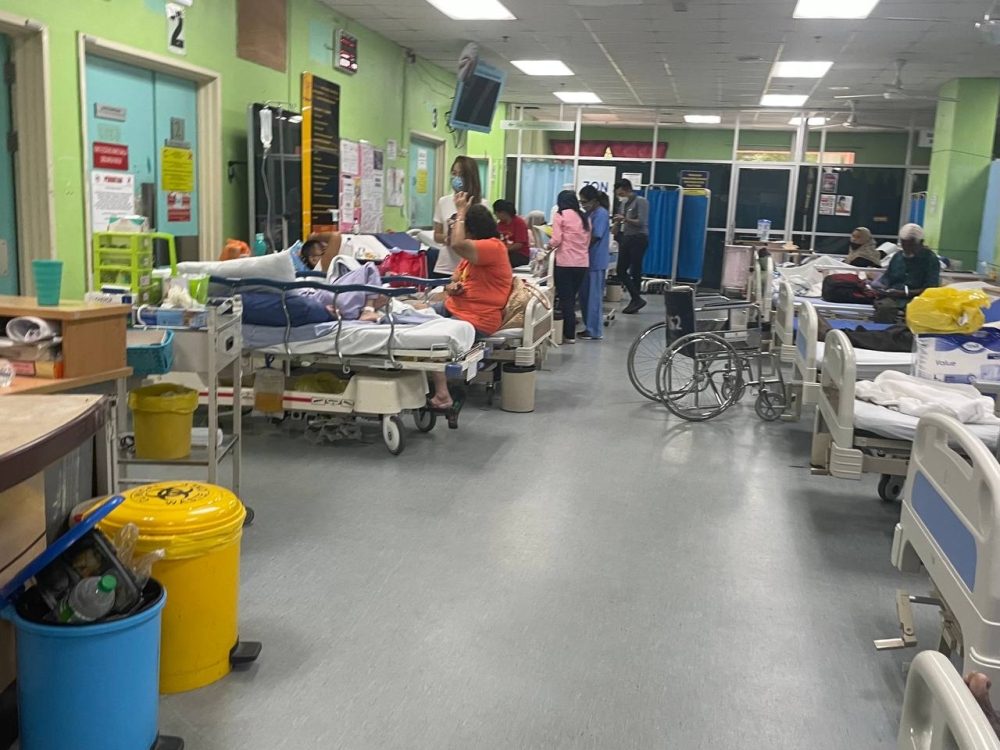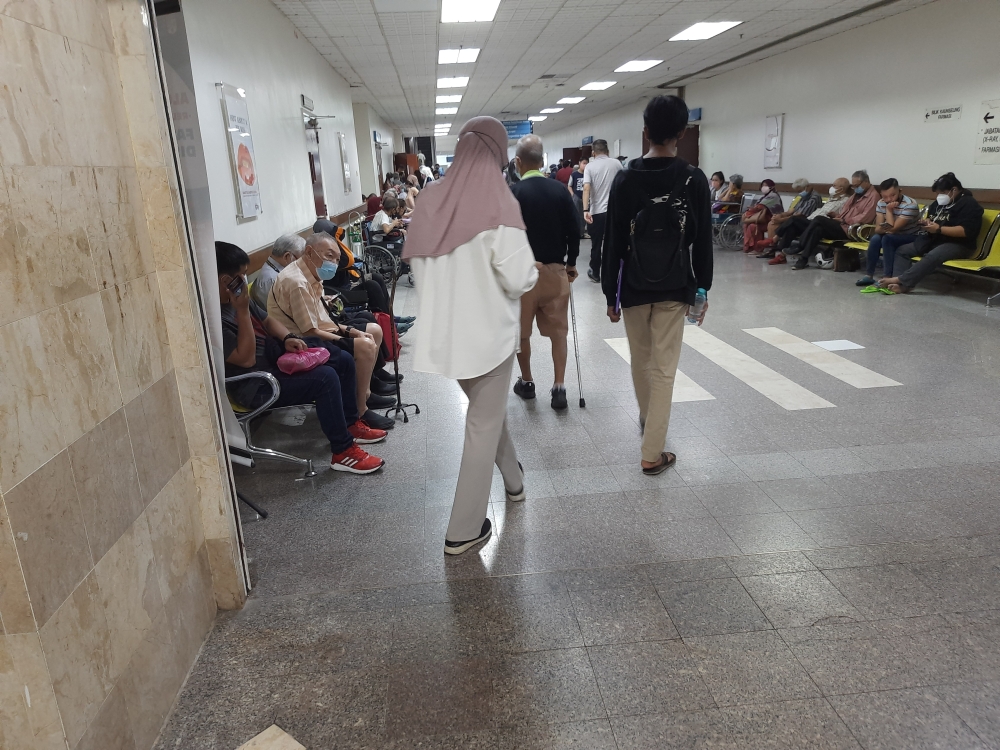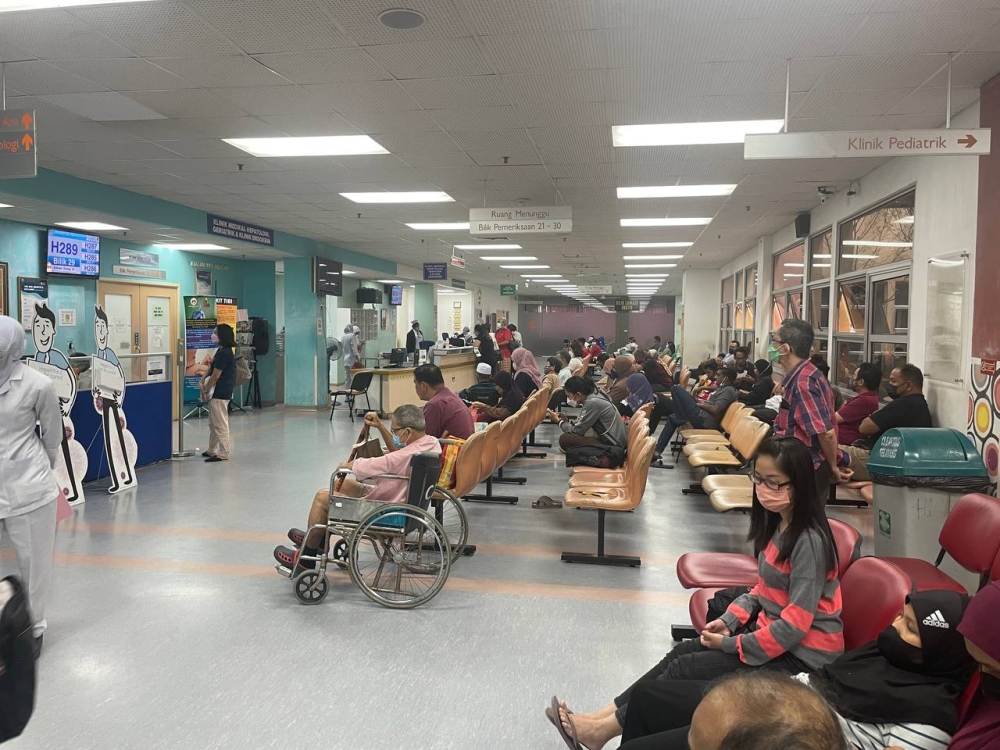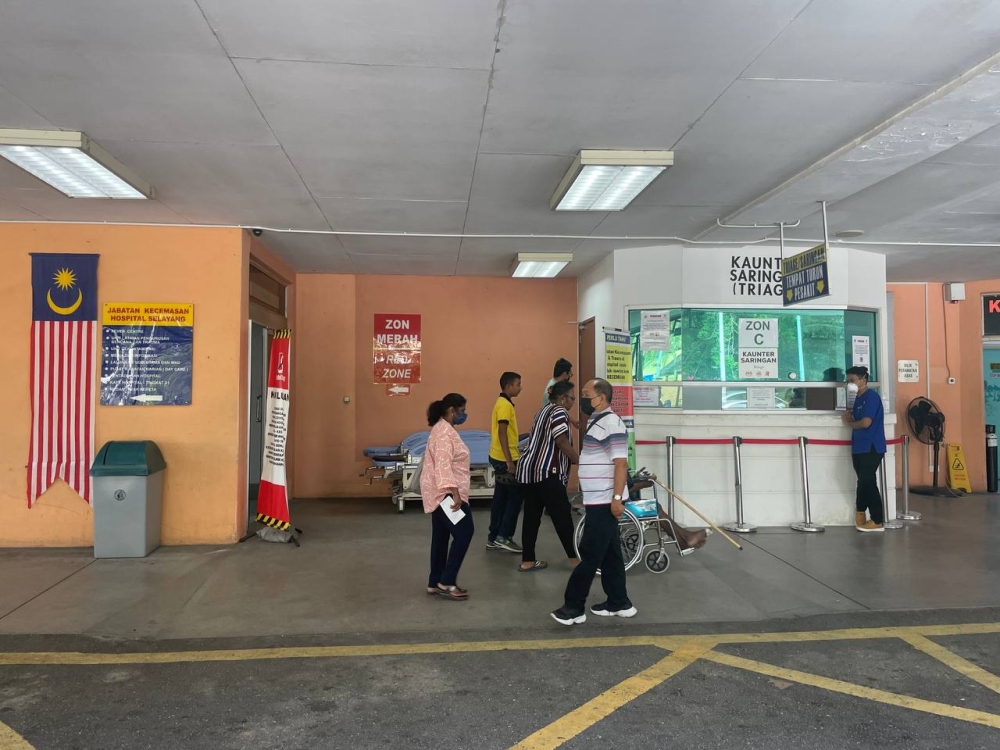KUALA LUMPUR, Feb 27 — Overcrowding at hospital emergency departments in the Klang Valley is not a consistent occurrence.
Despite widespread complaints of overcrowding at the emergency departments of government and semi-government hospitals, Malay Mail’s visits on February 17 and February 20 to six such hospitals found that the space seemed adequate for the existing patient load, with some hospitals having an abundance of empty beds.

The hospitals visited included four government-owned hospitals namely Putrajaya Hospital, Kajang Hospital, Selayang Hospital and Serdang Hospital, while the remaining two were government-funded hospitals — Hospital Canselor Tuanku Muhriz UKM (HCTM) and Universiti Malaya Medical Centre.
A junior doctor working at one of the observed hospitals said that overcrowding did happen, but that it was not an everyday occurrence.
“It really depends on your luck. On some days there would be non-stop patient turnover.
“Including those being super critical, for example, accidents with cranial trauma or vital organ damage or seizures or ruptured ectopics et cetera.
“And once we discharge the patients, then we have more (non-critical) patients sitting on the benches waiting to come in,” he said.

To note, Malay Mail visited the hospitals during mornings and afternoons, and reporters did not have access to enter the patient treatment areas as the visits were intentionally made without the knowledge of the hospitals.
Also, various news reports have quoted medical staff saying that many cases of overcrowding were not due to a low capacity at the emergency departments itself, but instead due to a lack of available beds at other department wards — causing patients to be stranded at the emergency departments.
It is also understood that there are several zones in these emergency departments — dubbed green, yellow and red based on the severity of the cases admitted — and the areas sighted may not have included all the zones.

Patients who have their airways secure, their blood circulatory systems stable, and are able to walk about; will be assigned to the green zones and will be tended to last.
Many of the hospitals had empty beds placed in the receptionist areas, and Malay Mail understands that these are additional beds prepared for when there inevitably is an overload of patients.
However, on both the days visited, the patient and visitor waiting areas at these emergency departments were also seen having ample space, and in some cases were almost empty.
Doctors, nurses and their support staff at these hospitals were also seen speaking to patients in a generally calm and firm manner.
Patients and those waiting for them also had little criticism.
One man who only wanted to be identified as Umar, 33 who was at the emergency department waiting area in Hospital Putrajaya on February 17, said that two blood tests for his wife took about two hours each.
His wife’s tonsils had been swollen for two days causing her acute pain.“
It was a pretty standard wait. We came in at 7am after getting a referral letter from a clinic.

“They took her blood but they said that the first blood test could not be used. They didn’t give us a reason why then they did the second blood test.
“But I have no complaints, we were treated okay,” he said.
Another man, who was waiting at Hospital Serdang for his father who had collapsed at home, was similarly satisfied with the hospital service.
“We came in an ambulance, and they immediately brought my father in. They’re doing blood tests now,” he said, adding that he had been waiting for an hour.
“It’s normal for a government hospital,” he said regarding the wait time.
Overcrowding, however, was seen at the hospital’s outpatient clinics, especially at specialist clinics.
At the HCTM outpatient clinic waiting areas, a crowd of over a hundred people was seen, almost half of whom were elderly.
At the Selayang Hospital, several patients said the congestion at the specialist clinics there was at its highest from 7am until noon, with some having experienced wait times of up to five hours.
Lee, 58, a resident of Sunway, said that the crowding at Selayang Hospital occurred because it has the only government clinic in this district with specialist services.
Overcrowding at hospital emergency departments has been an issue highlighted multiple times, especially as the voices of disgruntled government doctors gained volume in the wake of the Covid-19 pandemic.
On February 1, the Selangor health department announced that it was investigating the case of a 64-year-old man who had died at Hospital Serdang, after the man’s son made a Twitter post.
The son said that the death was caused by the hospital’s negligence, claiming that his father was not admitted even after 17 hours of arriving at the hospital, due to a lack of beds.
On February 14, it was reported that a patient had stabbed another patient at the Hospital Selayang emergency department.
According to The Straits Times, the perpetrator became upset after being left waiting for a bed to become available in order for him to be admitted.



















